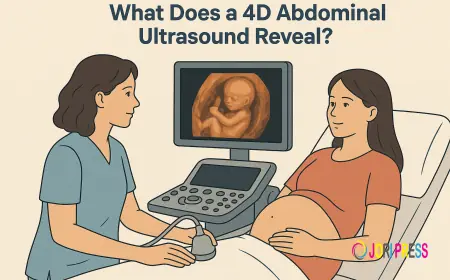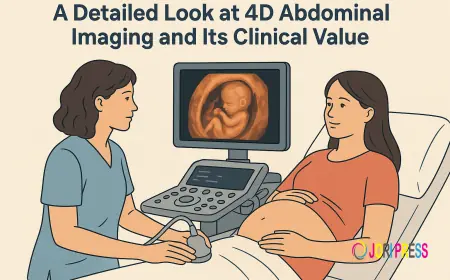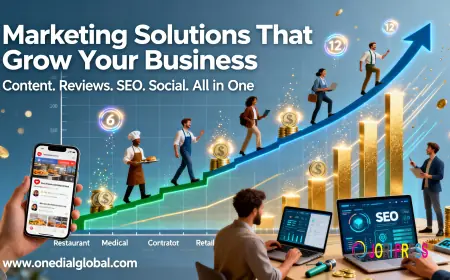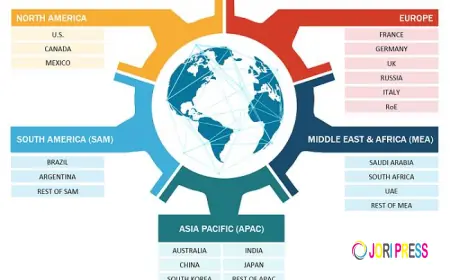The Role of SEO, PPC Advertising, and Social Media Marketing in Modern Digital Strategies

Introduction
In the digital era, businesses rely on multiple online strategies to enhance visibility, attract audiences, and improve conversions. Among the most effective techniques are Search Engine Optimization (SEO), Pay-Per-Click (PPC) Advertising, and Social Media Marketing (SMM). Each plays a distinct yet complementary role in helping organizations reach their marketing goals. Together, these digital marketing approaches form a cohesive framework for long-term online success.
Understanding Search Engine Optimization (SEO)
Search Engine Optimization (SEO) is the process of optimizing a website to rank higher in organic search engine results. The purpose of SEO is to increase the quantity and quality of traffic to a website without relying on paid advertisements.
How SEO Works
SEO combines various techniques, including keyword research, content creation, technical improvements, and link building. Search engines analyze website structure, content relevance, and user experience to determine ranking positions.
Core Components of SEO
-
On-Page SEO: Focuses on optimizing website content, titles, and meta descriptions.
-
Off-Page SEO: Involves building backlinks and improving domain authority.
-
Technical SEO: Ensures fast loading speed, mobile responsiveness, and proper indexing.
By implementing these methods, businesses can improve visibility and attract audiences actively searching for their products or services.
Benefits of Search Engine Optimization (SEO)
-
Generates sustainable and organic website traffic
-
Builds brand credibility and trust
-
Reduces dependency on paid advertising
-
Improves user experience and engagement
-
Provides long-term visibility in competitive markets
Search Engine Optimization (SEO) serves as a foundation for digital marketing success by ensuring that websites remain discoverable and relevant.
Exploring Pay-Per-Click (PPC) Advertising
Pay-Per-Click (PPC) Advertising is a paid marketing model where advertisers pay each time a user clicks on their ad. This approach provides immediate visibility and measurable results across search engines and digital platforms.
How PPC Works
Advertisers bid on specific keywords related to their business. When users search for those terms, ads appear at the top of search results. If the ad is clicked, the advertiser pays a set amount based on the competition for that keyword.
Advantages of PPC Advertising
-
Instant Traffic: PPC delivers quick visibility, making it useful for short-term campaigns.
-
Precise Targeting: Ads can be shown based on demographics, location, and search intent.
-
Budget Flexibility: Campaigns can be scaled up or down easily.
-
Measurable Performance: Metrics like click-through rates and conversions help track success.
Pay-Per-Click (PPC) Advertising is ideal for businesses seeking immediate impact while maintaining full control over spending and targeting.
The Importance of Social Media Marketing (SMM)
Social Media Marketing (SMM) focuses on promoting brands and engaging audiences through social media platforms such as Facebook, Instagram, LinkedIn, and X (Twitter). It helps businesses connect directly with customers, build communities, and share content that drives engagement.
How SMM Works
Through organic posts and paid promotions, businesses can increase brand awareness and foster interaction. SMM also enables two-way communication, allowing brands to receive feedback and strengthen customer relationships.
Key Components of SMM
-
Content Creation: Developing engaging posts, visuals, and videos.
-
Community Engagement: Interacting with followers and responding to messages.
-
Analytics Tracking: Measuring reach, engagement, and audience growth.
By maintaining consistent activity on social platforms, Social Media Marketing (SMM) helps businesses stay relevant and approachable.
How SEO, PPC, and SMM Work Together
While each strategy serves a unique purpose, combining Search Engine Optimization (SEO), Pay-Per-Click (PPC) Advertising, and Social Media Marketing (SMM) creates a comprehensive digital marketing approach.
|
Strategy |
Primary Focus |
Result |
|
SEO |
Organic search visibility |
Long-term traffic growth |
|
PPC |
Paid search and display ads |
Immediate visibility and conversions |
|
SMM |
Social platform engagement |
Brand awareness and audience connection |
Integration Benefits
-
Enhanced Brand Reach: A mix of SEO, PPC, and SMM ensures exposure across multiple channels.
-
Consistent Messaging: Unified campaigns strengthen brand identity.
-
Comprehensive Analytics: Data from all three sources supports better decision-making.
-
Balanced Results: SEO provides sustainability, PPC offers immediacy, and SMM builds loyalty.
Data-Driven Decision Making
Using performance metrics from SEO, PPC, and SMM allows marketers to adjust campaigns based on measurable outcomes. Analytics tools track user behavior, ad performance, and engagement levels, ensuring every marketing effort is optimized for success.
Conclusion
In conclusion, Search Engine Optimization (SEO), Pay-Per-Click (PPC) Advertising, and Social Media Marketing (SMM) are essential components of a well-rounded digital marketing strategy. SEO ensures long-term organic visibility, PPC provides immediate reach through targeted ads, and SMM fosters ongoing audience engagement. When integrated effectively, these strategies help businesses maintain a strong digital presence, build credibility, and achieve sustainable growth in the online marketplace.
What's Your Reaction?
 Like
0
Like
0
 Dislike
0
Dislike
0
 Love
0
Love
0
 Funny
0
Funny
0
 Angry
0
Angry
0
 Sad
0
Sad
0
 Wow
0
Wow
0




















































